There is lots of interest in the Bronze efficiency category, because the offers are highly affordable and several of them use modern platforms, usually found in Gold and Platinum efficiency PSUs, using lower-grade parts which still achieve good performance per price ratios. The ASUS TUF Gaming Bronze line is among the best in the affordable PSU segment and its flagship, the TUF 750 Bronze looks to be ideal for a mid-level PC system.
Asus is going strong in the PSU market, releasing products that cover a wide market range. Its TUF Gaming Bronze PSU line consists of four members with capacities ranging from 450W to 750W. At the time of the review, the 450W model was sold for 35 dollars on Asus’ shop, while the 750W model went for 80 dollars. These prices are reasonable, given the specs of these units. Don’t let the 80 PLUS Bronze certification fool you, thinking that the platforms are low-end. In the Cybenetics scheme, the TUF 750 is rated Silver with 115V input and Gold with 230V input!
The OEM of the Asus TUF Gaming units is Great Wall. Asus used the same platform as the Corsair CX line, which has been replaced by the lower-end CXM units, which are more affordable despite the semi-modular cable design. Although the TUF Gaming is supposed to be affordable, it still uses a double ball-bearing fan, which we usually meet in more expensive PSUs. Asus has a long history of making graphics cards, mainly using DBB fans to cool them down, and since the GPU team also handles power supplies, they use high-quality DBB fans instead of lower-grade sleeve or rifle-bearing ones. DBB fans are more expensive and noisier, but they are also way more reliable under harsh operating conditions.
- Manufacturer (OEM): Great Wall
- Max Power: 750W
- Cybenetics Efficiency: [115V] Silver (85-87%), [230V]: Gold (89-91%)
- 80 Plus Efficiency: Bronze
- Noise: Cybenetics Standard++ (30 – 35 dBA)
- Compliance: ATX12V v2.53, EPS 2.92
- Alternative Low Power Mode support: No
- Power 12V: 744W
- Power 5V + 3.3v: 130W
- Power 5VSB: 15W
- Cooling: 135mm Double Ball-Bearing Fan (CF1325H12D)
- Semi-Passive Operation: Yes
- Modular Design: No
- High Power Connectors: 2x EPS (2x cables), 4x PCIe 6+2 pin (2x cables)
- Peripheral Connectors: 8x SATA (2x cables), 4x 4-pin Molex (single cable)
- ATX/EPS Cable Length: 610/820mm
- Distance between SATA connectors: 110mm
- Distance between 4-pin Molex connectors: 150mm
- In-cable capacitors: No
- Dimensions (W x H x D): 150mm x 85mm x 150mm
- Weight: 2.15 kg (4.74 lb)
- Warranty: 6 years
Box & Bundle
I got a review sample without a box, so I don’t have anything to show you here.
Product Photos
From the moment it has a semi-passive mode, I would like to see a switch on the PSU’s front, to deactivate should I want the fan to spin constantly. Besides that, I like the exterior design, and the fan grill is not restrictive.
Cables
| Captive Cables | |||||
| Description | Cable Count | Connector Count (Total) | Gauge | In Cable Capacitors | |
|---|---|---|---|---|---|
| ATX connector 20+4 pin (610mm) | 1 | 1 | 18-20AWG | No | |
| 4+4 pin EPS12V (820mm) | 2 | 2 | 18AWG | No | |
| 6+2 pin PCIe (610mm+100mm) | 2 | 4 | 18AWG | No | |
| SATA (400mm+110mm+110mm+110mm) | 2 | 8 | 18AWG | No | |
| 4-pin Molex (400mm+150mm+150mm+150mm) | 1 | 4 | 18AWG | No | |
| Modular Cables | |||||
| AC Power Cord (1390mm) – C13 coupler | 1 | 1 | 18AWG | – | |
There are plenty of cables and connectors, and the EPS cables are long enough to install the PSU into a cave-size chassis without trouble. The distance between the 4-pin Molex is adequate, and it would be nice to see above 120mm in the SATA connectors. Still, I won’t complain because SATA drives/components can be installed closer to each other compared to components that use 4-pin Molex connectors.
Protection Features
|
Protection Features |
|
|
OCP (Cold @ 24°C) |
12V: 84A (135.48%), 11.987V |
|
OCP (Hot @ 39°C) |
12V: 83.8 A (135.16%), 11.99V |
|
OPP (Cold @ 27°C) |
988.30W (131.77%) |
|
OPP (Hot @ 40°C) |
985.30W (131.37%) |
|
OTP |
✓ (121°C @ 12V Heat Sink) |
|
SCP |
12V to Earth: ✓ |
|
PWR_OK |
Accurate but lower than 16 ms |
|
NLO |
✓ |
|
SIP |
Surge: MOV |
OCP at 12V is highly set, but it looks conservative compared to the OCP setting on the minor rails! I haven’t seen 38A at 5V and 40A at 3.3V before shut down in a long time. Despite the high loads, performance was good. Still, there is no point in such high OCP triggering points on the minor rails. Lastly, the over power protection is set correctly, and the other protection features are present.
Part Analysis
| General Data | |
| Manufacturer (OEM) | Great Wall |
| PCB Type | Single-Sided |
| Primary Side | |
| Transient Filter | 4x Y caps, 2x X caps, 2x CM chokes, 1x MOV |
| Inrush Protection | NTC Thermistor SCK201R0 (1 Ohm) |
| Bridge Rectifier(s) |
2x GBU1508 (800V, 15A @ 100°C)
|
| APFC MOSFETs |
2x Advanced Power AP30SL60WL (650V, 16.5A @ 100°C, Rds(on): 0.13Ohm)
|
| APFC Boost Diode |
1x CREE C3D06060 (600V, 3A @ 135°C)
|
| Bulk Cap(s) |
2x Lelon (450V, 270uF each or 540uF combined, 2,000h @ 105°C, LSG)
|
| Main Switchers |
2x Advanced Power AP65SL190D (650V, 12.3A @ 100°C, Rds(on): 0.19Ohm)
|
| APFC Controller |
Champion CM6500UNX & CM03AX
|
| Resonant Controller | Champion CM6901X |
| Topology |
Primary side: APFC, Half-Bridge & LLC converter
Secondary side: Synchronous Rectification & DC-DC converters |
| Secondary Side | |
| +12V MOSFETs | 4x Advanced Power AP9990GP (60V, 80A @ 100°C, Rds(on): 6mOhm) |
| 5V & 3.3V | DC-DC Converters |
| Filtering Capacitors | Electrolytic: 6x Lelon (4-7,000h @ 105°C, RXW), 2x Teapo (1-3,000h @ 105°C, SC), 1x Teapo (3-6,000h @ 105°C, SY) Polymer: 2x Elite, 5x Lelon, 2x no info |
| Supervisor IC | Sitronix ST9S429-PG14 (OCP, OVP, UVP, SCP, PG) |
| Fan Model | Champion CF1325H12D (135mm, 12V, 0.6A, Double Ball Bearing) |
| 5VSB Circuit | |
| Rectifier |
1x PFC PFR30L45CT SBR (45V, 30A)
|
| Standby PWM Controller | Power Intergrations TNY278PN |
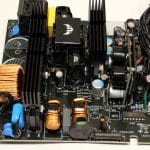
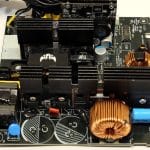

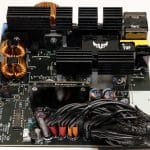
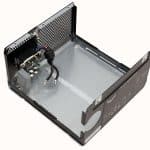
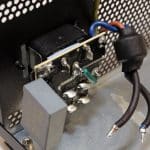
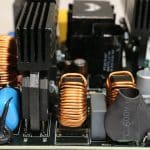
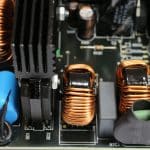
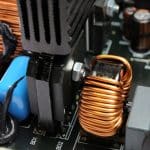
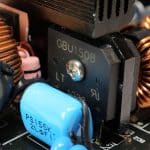
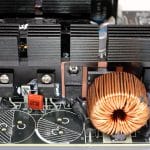
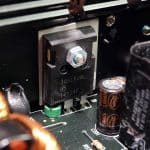

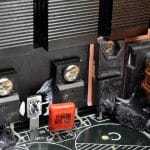

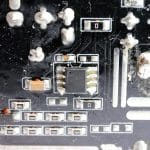
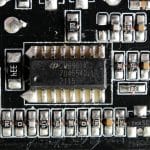
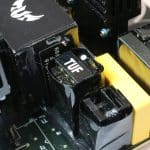
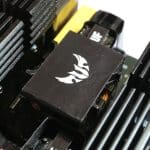
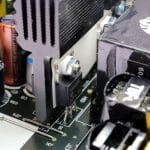
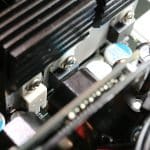
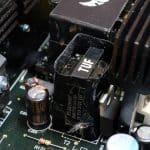
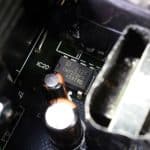

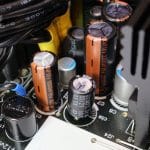

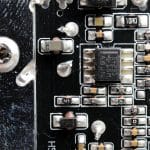
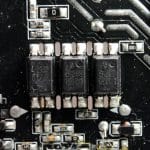
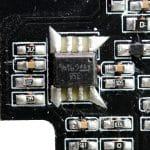

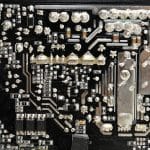
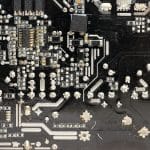
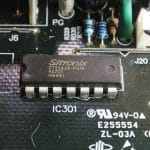
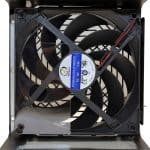
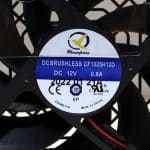
The OEM of all TUF Gaming units is Great Wall (GW). I have seen the same platform used in Corsair’s trendy CX line replaced by the semi-modular CXM units that use a CWT platform. This GW platform uses a modern design, usually seen in Gold, Platinum, and even some Titanium units. To keep the cost low, GW used Chinese-made caps provided by Lelon. This brand used to be mediocre, but its most recent products are ok, given the price. I would like to see at least Taiwanese caps used on the primary side.
On the secondary side, Lelon and Teapo electrolytic caps are used, along with several polymer ones. The soldering quality is mediocre. GW could do a better job there. Lastly, the cooling fan is of good quality. The moment other similar price units use sleeve or rifle-bearing fans, with the only exception of the XPG Pylon, which uses an FDB fan, the TUF 750 has a double ball-bearing fan.
Load Regulation
Load regulation is tight on all rails.
Ripple Suppression
Ripple suppression is good.
Transient Response
The transient response is terrible because of the low capacity on the secondary side. Only the 5VSB rail goes well here, but who cares?
Hold Up Time
The hold-up time is short,
Timings
The PSU supports Alternative Low Power Modes.
Inrush Current
Inrush currents are high, especially with 230V input.
Efficiency Normal, Light & Super-Light Loads
Efficiency is high with normal and light loads and satisfactory with ultra-light loads.
Average Efficiency 5VSB
The 5VSB rail is efficient.
Vampire Power
Vampire power is not high.
Average Efficiency
The average efficiency is high enough with 115V and pretty high with 230V.
Average PF
The APFC converter needs tuning to deliver better performance.
Average Noise
An aggressive fan speed profile drives the DBB fan. The Lelon and low-end Teapo caps on the primary and secondary sides need good cooling to outlive the extended warranty.
Fan Noise & Speed Maps @ 28-32 °C
Typically, high loads on the minor rails affect fan speed. The semi-passive mode doesn’t last for long. With up to 460W load, the PSU is relatively quiet, while wIth more than 530W, it enters the 35-40 dBA zone.
Overall Performance
The overall performance is the best in the 80 PLUS Bronze 750W category. Only the XPG Pylon 750 follows it from a distance, using an older and less capable platform. The notably more expensive EVGA 750 GT and be quiet! Pure Power 11 FM achieve better performance, but their performance per buck ratios are lower.
Epilogue
With a price of 80 dollars, during the time of the review at least, the TUF Gaming 750W is a decent choice. You wIll have to spend 35-45 dollars more (44 – 56% more) to get a high-performance Gold unit, like the be quiet! Pure Power 11 FM or the Corsair RM750x. The EVGA 750 GT that I used for comparison purposes was sold below $80 at some periods, and this is why I included it, but currently, it is expensive at over $120, so it doesn’t worth having it on your list.
The overall performance is higher than anything else in this category, but still, I would like to see a better transient response, especially at 12V, where it matters the most. Moreover, noise output is high, I suspect because of the low-quality caps that Great Wall used. The aggressive fan speed profile keeps the caps at low operating temperatures to survive the extended warranty. At least the fan looks to be of good quality so that it will survive the long warranty, even at high speeds. The semi-passive operation makes the PSU silent at light loads, but it doesn’t last long, especially if you apply a high load on the minor rails. The 3.3V rail is lightly used nowadays, but the 5V rail can be highly stressed if you have many ARGB lighting devices installed in your system.
To wrap up, the Asus TUF Gaming 750W offers high performance, but it could be way better with the following changes:
- More capacity on the secondary side for better transient response
- Higher quality caps for increased reliability and to allow for a looser fan speed profile
- Higher PF readings
- Lower OCP triggering points on the minor rails
- Larger bulk caps for over 17ms hold-up time
- Higher resistance NTC thermistor for lower inrush currents
- Better soldering quality
Buy Thermaltake Smart BM2 750W
- Full power at 47°C
- High overall performance
- Properly set OCP at 12V and OPP
- Efficient
- Tight load regulation
- Good ripple suppression
- Alternative Lower Power Modes support
- Double ball-bearing fan
- Lots of connectors and long cables
- Low vampire power
- Adequate distance between the 4-pin Molex connectors
- 6-year warranty
- Sky-high OCP on the minor rails
- Mediocre transient response
- High inrush currents
- Lower-quality caps used
- Low-performance APFC converter
- Noisy under harsh conditions

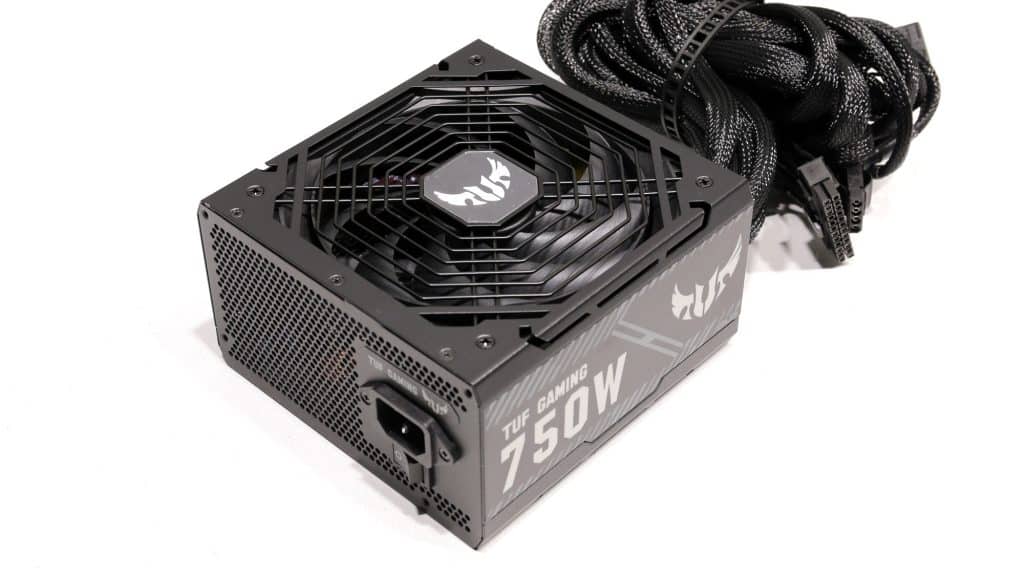
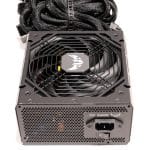

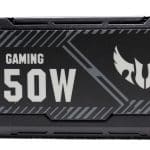
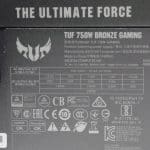

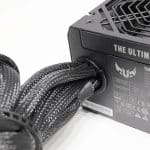
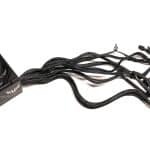
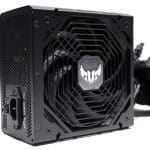
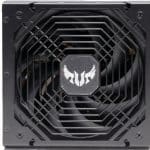

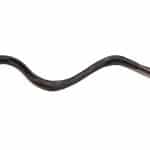

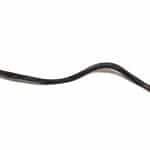
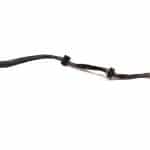
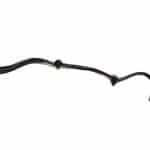
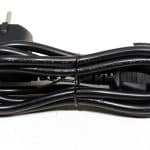

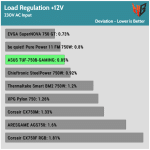
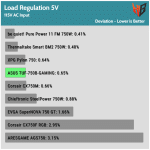


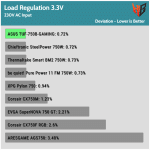
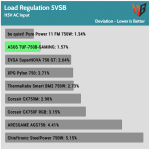
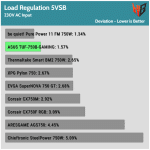
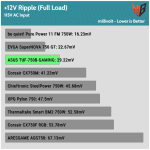
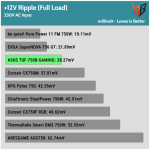

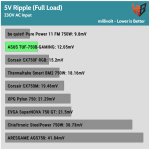
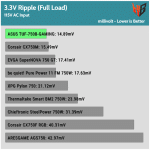
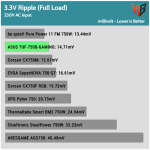
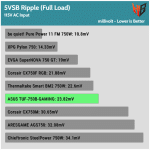
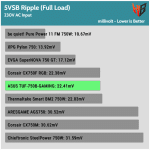
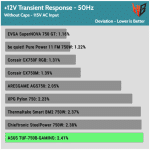
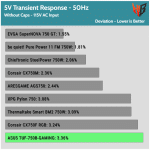





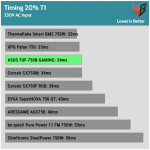
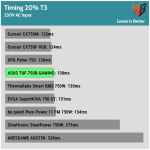
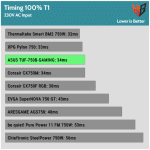
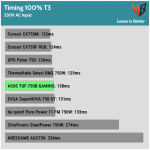
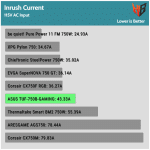
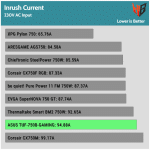
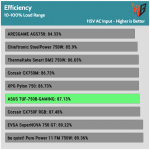
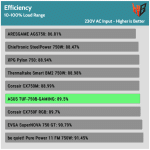
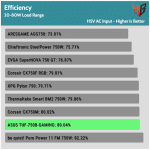
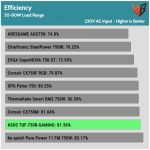
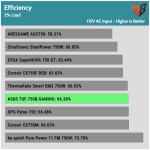
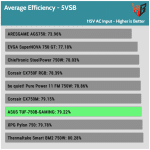

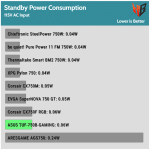
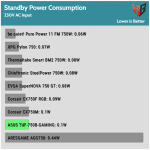

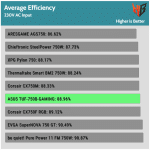
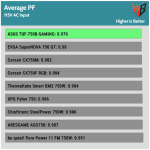
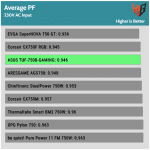
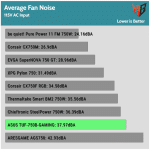

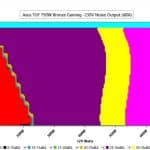
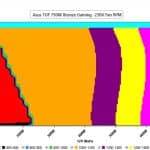
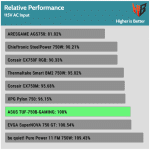
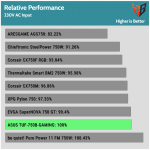
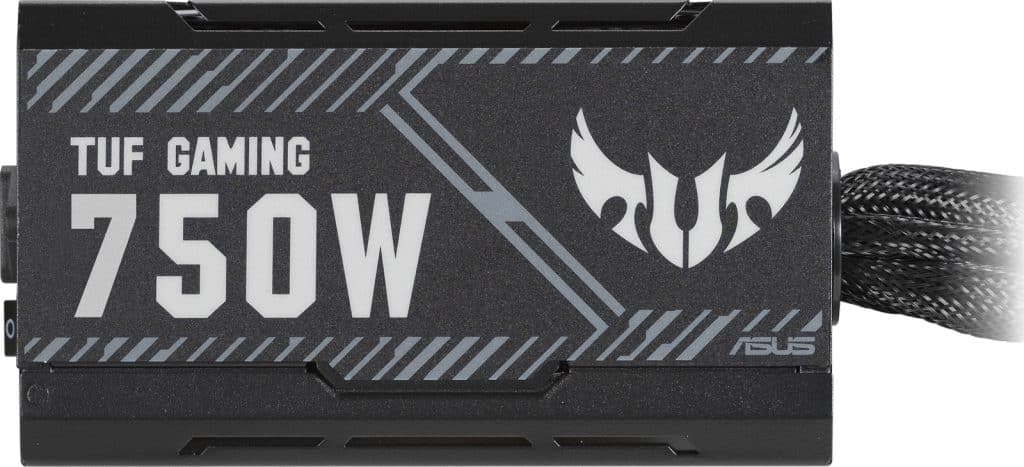


Hi,
I have two identical “Asus TUF Gaming 750g 750w modular” PSUs, the only difference is that one is 3.0 and the other 3.1 ATX standard.
I know the difference is that 3.0 has 12VHPWR while 3.1 has 12v-2×6 PCB header on PSU side, and we can use same cable for this pci-e 5.0, but what about other standard non 5.0/5.1 cables/headers that comes with the PSUs, for example 24pin MB, CPU,PCI-E 4.0, SATA/MOLEX cables/headers, are they the same on both PSU 3.0 and 3.1?
To simplify my question, can we use all cables that comes with “Asus TUF Gaming 750g 750w ATX 3.1” on the “Asus TUF Gaming 750g 750w ATX 3.0” ?
Thank you in advance.